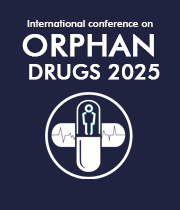Title : Precision pharmacotherapy in the treatment of epilepsy – use of antiseizure medications and therapeutic blood level monitoring?
Abstract:
This presentation will explore what happens to a Patient With Epilepsy (PWE) when (s) he attends the Emergency Department (ED) of the local teaching hospital which often includes the administration of an Antiseizure Medication (ASM) that is not the ASM that the patient was taking before the presentation. By far the most common reason for the PWE to attend the ED is: as a consequence of a failure of compliance (with a breakthrough seizure); exposure to a provocateur, such as infection or metabolic derangement; or the experience of a stressful situation which provoked a seizure. There is a rule of thumb which dictates that intervention should not confound the treatment by unnecessarily adding another ASM which may evoke medication interactions. It is more productive to determine the root cause of the presentation and address that. There is a need to arrest any seizures that may occur, during the admission, but to only interfere with short term therapy to stop the seizure, rather than change the ASM that has/had worked, prior to presentation. This should be achieved with a short acting ASM, such as a benzodiazepine followed by a longer acting ASM, namely the ASM that the patient was already taking but, prior to administering the long acting ASM, it is advisable to take blood samples to: determine compliance; seek cause of infection or sepsis; and assess metabolic status, including toxicity, hepatic function, renal function and electrolyte balance. It may be necessary to consider EEG or cerebral imaging. The ASM should be administered by the easiest route, acknowledging that midazolam can be applied topically, via the nose or gums, and carbamazepine can be given rectally but not parenterally. 1 hour after administering the long acting ASM, repeat levels, aiming for a therapeutic level and checking all the ASMs which the patient should be taking, remembering potential interactions. Once samples have been taken for ASM there is little worry about medication overdose as this can be easily managed in hospital.
Audience Take Away Notes
- This presentation should allow the audience to reconsider how to manage epilepsy which presents to the Emergency Department
- Use of the ASM which the patient was taking before presentation is the optimal ASM to use upon presentation.
- Take samples before loading the patient with long acting ASMs
- Treat to a therapeutic level rather than a predetermined dosage
- Don’t be afraid to recheck levels and readminister the ASM which is/ was subtherapeutic
- Try to determine why the seizures occurred and keep the patient as an inpatient until satisfied that (s)he is stable


